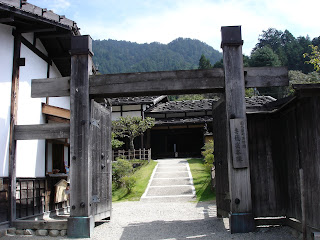Travel Japan-Nagano:
Perhaps best known as the site of the Winter Olympics in Japan in 1998, it is located in the northern part of the Prefecture in the Hokuriku area. The population is approximately 378,000. In the history of Japan, Nagano was the former fief of the Sanada clan of Shinano, and location of a famous battle between the Uesugi clan and Takeda clan in the battle of Kawanakajima in feudal Japan. Today, the Olympic ski runs are still visible and used during winter. The area is also known for its Jigokudani Monkey bathing, and is known for its onsen hot springs and sake because of the clean water in the area. It is accessible by train from Tokyo via Shinkansen - a 1 hour trip, and by bus from Tokyo a 3 ½ hour trip.
Tateyama-Kurobe -Alpine Route:
The Tateyama-Kurobe Alpine Route is a must see. The area, known as the Japan Alps, affords great panoramas and you can see the Japan geography of the countryside and unforgettable views of the mountains no matter what time of the year you visit. The Kurobe Dam also affords great views and the cable railway ride in the dam was quite scary, looking down as the railway car went up the dam at about a 45 degree angle. The area is accessible by train, bus, cable car and ropeway. My trip was by bus, trolley, cable railway and I was able to ride the ropeway which gave spectacular views of the dam and countryside. Being there in early fall, the air was quite chilly. Be sure not to miss the Daio Wasabi Farm, where you can eat a wasabi(Japanese horse radish) ice cream, wasabi beer, and many other wasabi-made food products. This is a recommended side trip.
Tsumago-juku an old post town on the Nakasendo Road of the Edo era, and was the 42nd post town counted from Edo(now Tokyo)to Kyoto, making for an interesting experience as you walk along the road and imagine what it would have been like during that feudal era. The architecture of the area included Japanese tile roofs and buildings mostly of weathered Japanese cypress. Experience the Japan culture that this precious historic town has been preserved as it was in Japan history, with no modern signs or exposed light/telephone poles or TV antennas. Interesting sights included a Kura (warehouse)with its Japanese padlock protecting the door and a water wheel.
For further information of this and other subjects, please click here: http://www.traveljapan-us.com/.
Thursday, March 4, 2010
Subscribe to:
Post Comments (Atom)














No comments:
Post a Comment